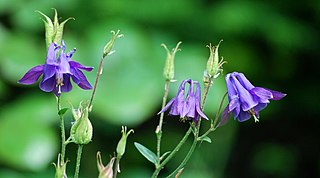
Aquilegia is a genus of about 130 species of perennial plants that are found in meadows, woodlands, and at higher elevations throughout the Northern Hemisphere, known for the spurred petals of their flowers.
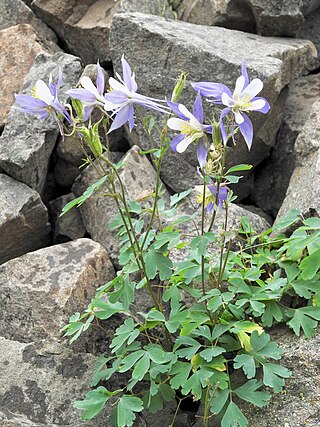
Aquilegia coerulea, the Colorado columbine, Rocky Mountain columbine, or blue columbine, is a species of flowering plant in the buttercup family Ranunculaceae, native to the Rocky Mountains and some of the surrounding states of the western United States. It is the state flower of Colorado. The Latin specific name coerulea means "sky blue".

Aquilegia eximia, the serpentine columbine or Van Houtte's columbine, is a perennial species of flowering plant in the family Ranunculaceae, endemic to California.
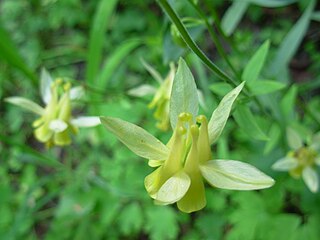
Aquilegia flavescens, the yellow columbine, is a perennial species of flowering plant in the family Ranunculaceae, native to the Rocky Mountains of the United States and Canada.
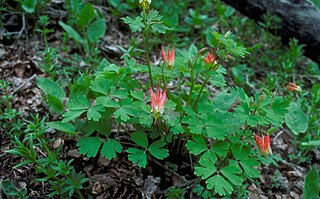
Aquilegia elegantula, the western red columbine, is a perennial species of flowering plant in the family Ranunculaceae, native to the Southwestern United States and northern Mexico.

Aquilegia micrantha var. grahamii, common name Graham's columbine, is a variety of perennial flowering plant in the family Ranunculaceae, endemic to Utah in the United States.

Aquilegia longissima, the long-spur columbine or long-spurred columbine, is a rare perennial flowering plant in the family Ranunculaceae that is native to northern Mexico, Texas, and Arizona.

Aquilegia fragrans, the fragrant columbine or sweet-scented columbine, is a perennial species of flowering plant in the family Ranunculaceae, native to the Western Himalayas.
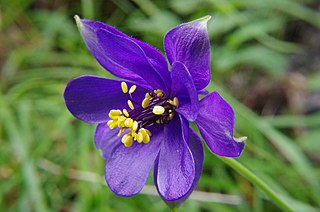
Aquilegia alpina, the alpine columbine or breath of God, is a perennial species of flowering plant in the family Ranunculaceae, native to the western and central Alps. Though rare in its Swiss, Austrian, and Italian range, it is commonly found in the French Maritime Alps. A. alpina is appreciated for its light blue to blue-purple flowers.

Aquilegia viridiflora, commonly known as the green columbine or green-flowered columbine, is a perennial flowering plant in the family Ranunculaceae, native to southern Siberia, northern China, Mongolia, and Japan.

Aquilegia barnebyi, commonly known as the oil shale columbine or Barneby's columbine, is a perennial species of flowering plant in the buttercup family, with a native range comprising northeastern Utah and northwestern Colorado in the United States. It is named after Rupert Charles Barneby, who, with Harry Dwight Dillon Ripley, first discovered it in Colorado.

Aquilegia desertorum, the desert columbine, is a perennial species of flowering plant in the family Ranunculaceae, native to the Southwestern United States.

Aquilegia desolaticola, the desolation columbine or Desolation Canyon columbine, is a perennial species of flowering plant in the family Ranunculaceae, endemic to Utah.

Aquilegia micrantha, the Mancos columbine or Bluff City columbine, is a perennial species of plant in the family Ranunculaceae, native to Utah, Colorado, and Arizona.
Aquilegia atwoodii, commonly known as Atwood's columbine, is a perennial flowering plant in the family Ranunculaceae, endemic to Utah.

Penstemon moffatii, commonly called Moffat penstemon, is a flowering plant from the mesas and canyons of western Colorado and eastern Utah.

Aquilegia discolor, commonly known as the two-coloured columbine, is a perennial flowering plant in the family Ranunculaceae, endemic to northwestern Spain.

Aquilegia fosteri, common name Foster's columbine, is a perennial flowering plant in the family Ranunculaceae, native to Utah and Arizona.

Aquilegia ganboldii is a perennial flowering plant in the family Ranunculaceae, native to Mongolia, northeast China, North Korea, and Siberia.
Aquilegia grubovii is a perennial flowering plant in the family Ranunculaceae, native to northern Mongolia and Tuva in Russia.


















